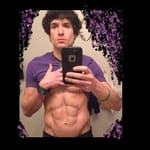
The history of female bodybuilding is a story of perseverance, breaking barriers, and redefining what it means for women to be strong. While bodybuilding has long been dominated by men, women have slowly carved out their own place in the sport, challenging societal norms and reshaping perceptions of femininity and strength. From the early pioneers who had to fight for recognition to the modern-day athletes who continue to break records and inspire millions, female bodybuilding has a rich and evolving history.
The origins of female bodybuilding can be traced back to the early 20th century when women’s physical culture began to gain popularity. Women like Bernarr Macfadden, known as the “father of physical culture,” advocated for fitness and strength training, although the focus was primarily on health and wellness rather than muscle building. In the 1920s and 1930s, women were encouraged to engage in more physical activity, but bodybuilding was still seen as a predominantly male endeavor.
One of the earliest female bodybuilders to make a significant impact was Sarah Lyons. A pioneering figure in the 1930s and 1940s, she was known for her muscular physique and was one of the first women to publicly display her strength. While bodybuilding still had little visibility for women at this time, athletes like Lyons set the stage for a future generation to take the sport more seriously.
The 1950s and 1960s saw more women becoming involved in competitive fitness, though it was still a far cry from the professional bodybuilding circuits that we see today. During this time, bodybuilding for women was often associated with “muscle beauty” contests, where the emphasis was less on size and strength and more on a lean, athletic appearance. The rise of health and fitness trends during this period helped to normalize women engaging in physical training, but competitive bodybuilding remained largely male-dominated.
The 1970s marked a pivotal decade in the history of female bodybuilding. This was the era when bodybuilding truly began to evolve into a more recognized sport for women. In 1977, the first official female bodybuilding competition, the “Best in the World” competition, was held. Although this was a small event compared to today’s major competitions, it was a significant milestone for women in the sport.
The 1980s were another transformative decade, thanks in part to the popularity of the fitness movement and the increasing acceptance of muscular women. One of the most iconic figures from this era was Rachel McLish, who won the first-ever female “Mr. Olympia” competition in 1980. McLish’s victory brought bodybuilding for women into the mainstream, and she became a role model for many aspiring female athletes. During this time, bodybuilding competitions began to expand, with more contests dedicated solely to women and categories for women to showcase their muscle development.
However, the 1980s and 1990s also introduced a shift toward more extreme muscularity in female bodybuilding. With the rise of athletes like Cory Everson, who won six consecutive Ms. Olympia titles from 1984 to 1989, and the controversial development of the “mass monster” physique, bodybuilding for women began to move into a realm of extreme size and muscularity. While these athletes were highly celebrated for their physical accomplishments, their size and muscularity were met with mixed reactions. Some critics believed that this shift was taking bodybuilding away from its original, more feminine roots, while others celebrated the athletes’ ability to push the boundaries of what women could achieve in strength sports.
The late 1990s and early 2000s saw further diversification in the sport, as more categories were introduced to allow for different body types and levels of muscularity. The introduction of the Fitness and Figure divisions offered women more options in terms of physique criteria and helped to expand the appeal of bodybuilding to a wider audience. These divisions placed less emphasis on extreme size and more on overall shape, symmetry, and athleticism.
In the 2010s and beyond, female bodybuilding continued to evolve, with modern athletes finding a balance between size, strength, and aesthetic appeal. Figures like Iris Kyle, who holds 10 Ms. Olympia titles, and other standout athletes like Lenda Murray and Dana Linn Bailey, have helped to redefine the sport by pushing boundaries while maintaining grace and femininity. Female bodybuilders today can range from extremely muscular athletes in the Women’s Open division to leaner, more athletic competitors in the Physique, Fitness, and Bikini categories.
The rise of social media has also played a crucial role in the growth of female bodybuilding. Platforms like Instagram, YouTube, and TikTok have given athletes a direct way to connect with fans, share their training, and showcase their physiques to a global audience. This has helped to normalize strong, muscular women and challenge outdated stereotypes about female strength. Bodybuilders today can create their own brands, share their experiences, and inspire others through their social media presence, breaking down barriers and encouraging young women to pursue strength training and bodybuilding.
Throughout its history, female bodybuilding has faced challenges, criticisms, and stereotypes, but it has also paved the way for generations of women to embrace their strength, power, and potential. Female bodybuilders today are stronger, more visible, and more celebrated than ever before, and their contributions to the sport continue to inspire and empower others around the world. The history of female bodybuilding is not just about muscle development, but about overcoming societal expectations and proving that strength, resilience, and beauty come in many forms.



